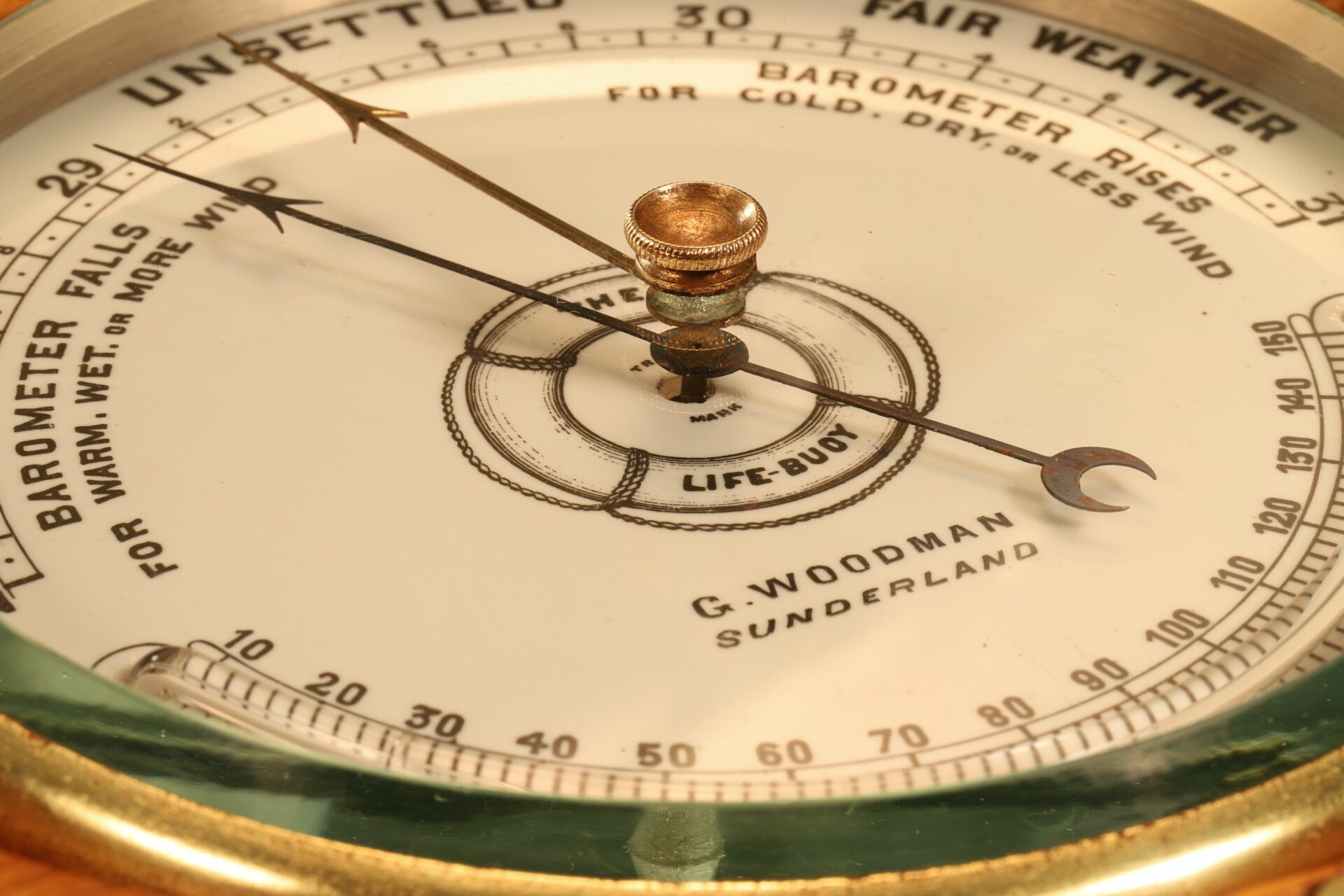A rare oak cased The Life-Buoy marine barometer with thermometer by Dollond retailed by Woodman, Sunderland c1885
Marine barometer having 5″ transfer-printed vitreous glass dial, the upper part with standard meteorological terms, semi-circular barometric scale calibrated in inches of mercury and with a range from 28 – 31, divided to 1/20ths. The lower part with semi-circular thermometer calibrated in degrees Fahrenheit with a range from 10 – 150, the inner dial with retailer’s particulars, “G. Woodman, Sunderland,” surmounted by a life ring annotated “The Life-Buoy” and further detailed “Trade Mark.” Blued steel pointer, gilt brass index, all set beneath a heavy bevelled glass maintained in a brass bezel. Conventional high quality aneroid movement driven from a 2¼” capsule tensioned on a C spring. All contained with a square sandwich style oak case, secured with brass screws. The verso with hanging plate and calibration port.
The subject of a comprehensive overhaul and re-calibration under laboratory conditions – see performance chart.
The dial clean and damage free, the movement working well with good sensitivity and progression. The bezel lacking its original lacquered finish, the oak case with repaired crack at 9 o’clock position, signs of case shrinkage, some marks and areas of discolouration.
Dollond constructed a series of ‘novelty’ barometers, partly as a foil to their immensely successful series of “Shipwrecked Mariners Society” barometers, but primarily as a marketing exercise. A number of versions based on the same movement as found in the Shipwrecked barometers are known, to include “ The Universal” and “The Royal Standard” pattern instruments, both of which must be considered very scarce. “The Life-Buoy” variant is known in two quite distinctly different forms: a cast iron cased and an oak cased variant. This oak cased instrument is one of only three that we have seen.
As with all timber cased barometers of this age, there will be varying degrees of shrinkage across the grain. This is unavoidable and will probably have taken place within the first 30 years or less from being new. This can make these instruments very difficult to disassemble, and in this model, the two halves, front and back, are not only fixed with screws but also glued together. In the case of this instrument, shrinkage had caused the glue to fail, affording a rather more straight forward strip down.
A very unusual and attractive instrument – certainly a lot for the collector or connoisseur alike.
Dimensions: 7½” wide x 7¼” high x 2¾” deep
Stock No: BA1538
Price: SOLD


